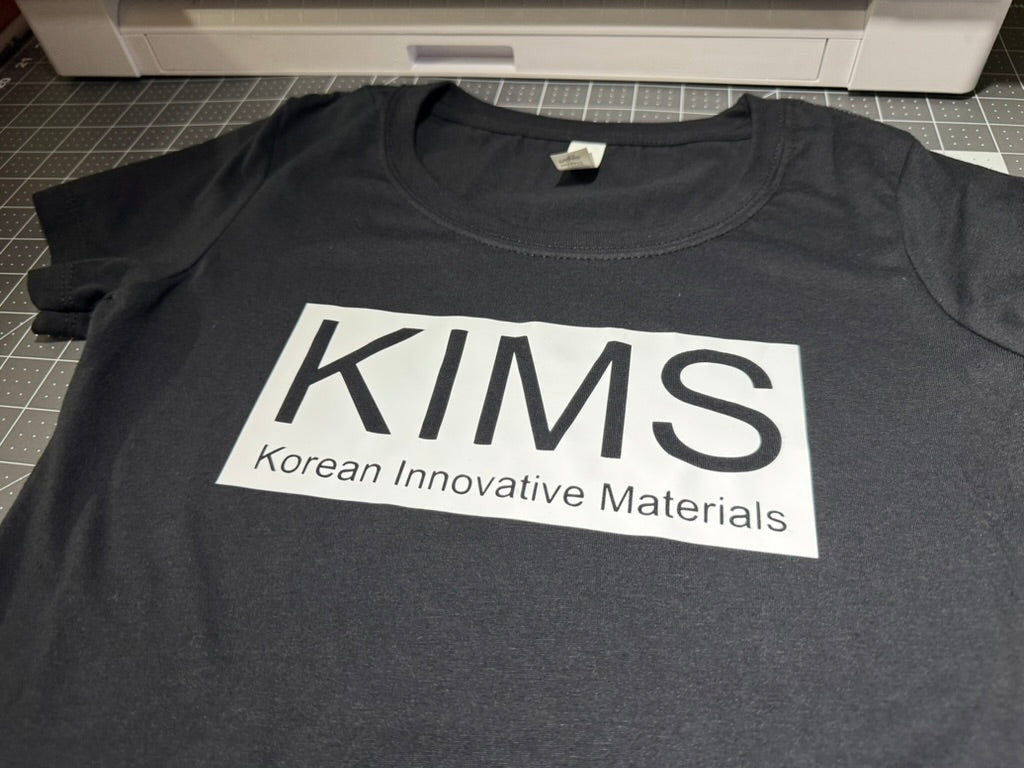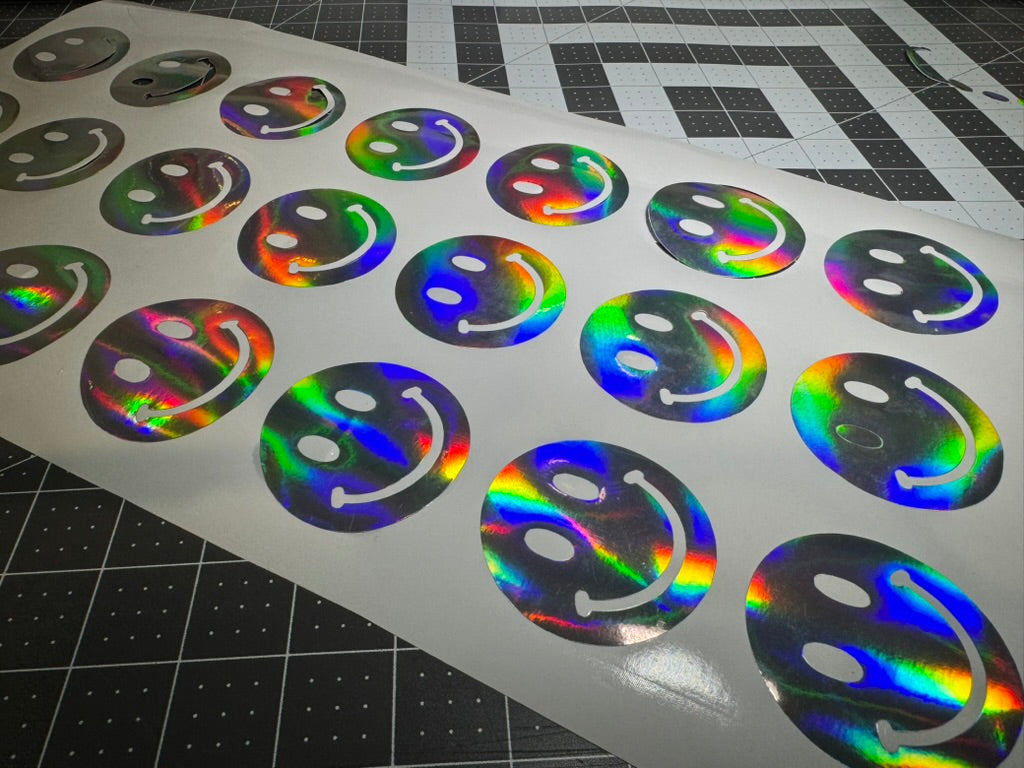Starting a custom t-shirt business offers a practical way to enter the apparel industry with a manageable setup. Many creators and small business owners begin with heat transfer vinyl (HTV) because it allows for flexible production without high upfront costs.
This guide outlines the process of starting a t-shirt business using HTV. It covers essential tools, step-by-step production, pricing strategies, and ways to reach customers. The focus is on practical steps and clear comparisons to help new business owners make informed decisions.
Whether the goal is to sell online, fulfill local orders, or customize apparel for events, HTV provides a reliable entry point. Each section in this guide is designed for beginners who want to learn the basics and take the next steps with confidence.
Why Heat Transfer Vinyl Is An Ideal Startup Choice
Heat transfer vinyl (HTV) is a thin material that transfers designs onto fabric when heat and pressure are applied. For those starting a t-shirt business, HTV offers several advantages over other printing methods.
The equipment needed for HTV is more affordable than screen printing or direct-to-garment (DTG) printing. A basic setup includes a vinyl cutter ($200-$300), heat press ($300-$500), and vinyl materials. This lower initial investment reduces financial risk when testing the market.
HTV works well for small batches and one-off designs. Unlike screen printing, which requires setup for each color, HTV can be cut and applied as needed. This flexibility is perfect for custom orders or limited edition designs.
The space requirements are minimal too. A small desk or table can accommodate a vinyl cutter, while the heat press needs a sturdy surface with access to power. Many successful HTV businesses operate from spare rooms or small studios.
|
Printing Method |
Startup Costs |
Space Needed |
Learning Curve |
Best For |
|---|---|---|---|---|
|
HTV |
$500-$1,000 |
Small |
Moderate |
Custom designs, small batches |
|
Screen Printing |
$1,500-$5,000 |
Large |
Steep |
Large orders, simple designs |
|
DTG |
$5,000-$20,000 |
Medium |
Steep |
Detailed designs, small batches |
|
Sublimation |
$1,000-$2,000 |
Small |
Moderate |
Polyester garments, full-color |
Essential Equipment And Supplies For Your HTV T-Shirt Business
1. Heat Press Machine
A heat press applies the vinyl to fabric using heat and pressure. For t-shirts, a 15x15-inch press works well for most designs. There are three main types:
-
Clamshell presses open and close like a clam and take up less space, making them popular for beginners.
-
Swing-away presses allow the top plate to swing to the side, giving better access to position garments.
-
Draw presses have a lower platen that pulls out like a drawer for easy garment placement.
Key features to look for include:
-
Even heat distribution: Prevents patchy transfers
-
Digital time and temperature controls: Ensures consistent results
-
Pressure adjustment: Different vinyl types require different pressure levels
2. Vinyl Cutter
A vinyl cutter uses a small blade to cut designs from HTV sheets. Entry-level cutters like the Silhouette Cameo or Cricut Explore work well for beginners. These machines connect to computers and use design software to create and cut designs.
The cutting width determines the maximum size of designs. Most t-shirt designs fit within a 12-inch width, but larger cutters allow for bigger designs or cutting multiple items at once.
Blade quality affects cutting precision. Keep spare blades on hand and replace them when cuts become less clean. A dull blade can tear vinyl or fail to cut completely through.
3. Heat Transfer Vinyl
Heat transfer vinyl comes in rolls or sheets and in various types:
-
Standard HTV: Matte finish, good for most designs
-
Glitter and metallic: Adds sparkle and shine
-
Flock: Gives a velvet-like texture
-
Stretch: Extra flexible for performance wear
-
Reflective: Shines when light hits it
HTV has two sides: the colored vinyl and a clear carrier sheet that holds the design in place. The vinyl side goes against the fabric during pressing, while the carrier sheet faces up.
Different vinyl types have specific temperature and time settings. KIMS Direct offers premium vinyl with consistent quality and easy application. Their vinyl cuts cleanly and weeds easily, which saves time on detailed designs.
4. T-Shirt Garments And Accessories
Choose t-shirts that work well with HTV. 100% cotton is the most versatile, but poly-cotton blends (50/50) also work well. For performance wear, look for polyester blends designed for heat application.
Helpful accessories include:
-
Weeding tools: Small hooks and tweezers for removing excess vinyl
-
Teflon sheets: Protect the vinyl and press during application
-
T-square and ruler: Help with design placement
-
Heat-resistant tape: Holds designs in position
Set up a dedicated workspace with good lighting, a flat surface for the heat press, and storage for vinyl and shirts. A clean, organized space improves efficiency and reduces errors.
Step-By-Step Guide To Cutting And Pressing HTV Designs
1. Prepare And Mirror The Design
Creating designs for HTV requires software that can produce vector graphics. Free options include Inkscape or Canva, while paid programs like Adobe Illustrator offer more features.
The most important step when preparing a design is mirroring it. Since HTV is applied face-down, the design must be flipped horizontally before cutting. Otherwise, text will appear backward on the finished shirt.
"Always remember to mirror your design before cutting. This simple step prevents costly mistakes and wasted materials." - Experienced HTV business owner
For multi-color designs, separate each color into its own file. This allows cutting different colored vinyl pieces that can be layered during application.
2. Cut The Vinyl
Place the HTV on the cutting mat with the shiny carrier sheet side down. The dull, colored side should face up – this is the side the machine will cut.
Set the proper cutting settings in your software. Different vinyl thicknesses require different blade depths and cutting pressures. When in doubt, do a small test cut first.
Common cutting issues include:
-
Not cutting all the way through: Increase pressure or blade depth
-
Cutting through the carrier sheet: Reduce pressure or blade depth
-
Vinyl tearing during weeding: Blade may be dull or pressure too high
3. Weed The Excess
Weeding is removing the unwanted vinyl from around and inside your design. After cutting, use a weeding tool to carefully pull away the excess vinyl, leaving only the design on the carrier sheet.
For intricate designs:
-
Start from the outside: Work your way in to avoid damaging small details
-
Use good lighting: A light pad underneath can help show cut lines
-
Take your time: Rushing leads to mistakes and damaged designs
Small details like the centers of letters (like "o" or "e") need special attention. Count these pieces before and after weeding to make sure none are missed.
4. Press The Design
Preheat your garment for 3-5 seconds to remove moisture and wrinkles. This improves vinyl adhesion and prevents steam from affecting the application.
Position the design on the shirt with the carrier sheet facing up. For precise placement:
-
Measure from the collar down for consistent height
-
Use the shirt's center seam as a guide for alignment
-
Place the design 3-4 inches below the collar for adult shirts
Cover the design with a Teflon sheet before closing the press. This protects both the vinyl and the heat press from adhesive residue.
Press according to the vinyl manufacturer's instructions. Standard settings are:
-
Temperature: 305-315°F (150-160°C)
-
Time: 10-15 seconds
-
Pressure: Medium
5. Cool And Peel
Some vinyl types require hot peeling (removing the carrier sheet immediately), while others need cold peeling (waiting until cool). Check the instructions for your specific vinyl.
Peel the carrier sheet at a 180-degree angle, pulling it back against itself rather than straight up. If any part of the design lifts with the carrier, press it again for a few more seconds.
Test the durability by gently stretching the shirt. The vinyl should move with the fabric without cracking or peeling. If the edges lift, press again with slightly higher temperature or pressure.
How To Price HTV T-Shirts For Maximum Profit
Pricing t-shirts correctly ensures your business remains profitable. Calculate all costs before setting prices:
Material costs include:
-
T-shirt blank ($2-5 depending on quality)
-
Vinyl used in the design ($0.50-2.00 depending on size and type)
-
Packaging materials ($0.25-1.00)
Time costs cover:
-
Design creation (15-30 minutes)
-
Cutting and weeding (5-15 minutes)
-
Pressing and finishing (5 minutes)
If you value your time at $15 per hour, a shirt taking 30 minutes to complete has a labor cost of $7.50.
Equipment costs should be factored in as well. If your heat press and cutter cost $1,000 combined and last for 1,000 shirts, that's $1 per shirt in equipment depreciation.
A simple pricing formula:
(Materials + Labor + Equipment) × 2 = Retail Price
For example:
-
T-shirt: $3.50
-
Vinyl: $1.25
-
Packaging: $0.50
-
Labor (30 min): $7.50
-
Equipment: $1.00
-
Total cost: $13.75
-
Retail price: $27.50
For wholesale or bulk orders, use a smaller markup (1.5× instead of 2×) but require minimum quantities.
Building Your Brand And Finding Customers
1. Create An Online Presence
Setting up an online store makes your products available to a wider audience. Options include:
-
Dedicated website: Platforms like Shopify or WooCommerce give you complete control over branding and customer experience.
-
Marketplace shops: Etsy, Amazon Handmade, or eBay provide built-in traffic but charge fees and have competition.
High-quality product photos are essential for online sales. Show shirts from multiple angles, including close-ups of the vinyl design. Use models or mannequins to display how shirts fit.
Product descriptions should include:
-
Shirt brand, material, and sizing information
-
Vinyl type and features (stretch, sparkle, etc.)
-
Care instructions (usually wash inside-out, tumble dry low)
-
Customization options if available
2. Promote On Social Media
Different social platforms serve different purposes:
-
Instagram: Showcase designs with high-quality photos and short videos
-
TikTok: Share behind-the-scenes content and design process videos
-
Facebook: Connect with local customers and create community groups
-
Pinterest: Post inspirational design ideas that drive traffic long-term
Content ideas that work well include:
-
Time-lapse videos of the weeding or pressing process
-
Before and after transformations
-
Customer testimonials and photos
-
Limited-time design offers
Encourage customers to tag your business in photos wearing your shirts. This creates authentic content and reaches their followers.
3. Partner Locally
Local partnerships provide steady business with less marketing effort:
-
Schools and sports teams need shirts for events, clubs, and uniforms
-
Local businesses require branded shirts for staff or promotions
-
Event organizers need shirts for fundraisers, races, and festivals
Attending craft fairs and local markets allows direct sales and customer feedback. Bring a selection of pre-made designs and business cards for custom orders.
Consider consignment arrangements with local boutiques where they display and sell your designs for a percentage of sales. This increases visibility without the overhead of a retail space.
Moving Forward With A Profitable HTV Business
As your business grows, look for opportunities to expand your product line. HTV works on more than just t-shirts – consider adding:
-
Hoodies and sweatshirts
-
Tote bags and accessories
-
Hats (with a hat press attachment)
-
Home décor items like pillow covers
Streamline your workflow by batching similar tasks. Cut multiple designs at once, then weed them all, then press them in sequence. This reduces setup time and increases efficiency.
Develop relationships with reliable suppliers to ensure consistent materials. KIMS Direct offers premium heat transfer vinyl with superior cutting precision and easier weeding, which can reduce production time by up to 30%.
Document your processes so you can train helpers or employees as you grow. Creating standard procedures for design preparation, cutting settings, and pressing times ensures consistent quality across all products.
Ready to start your HTV t-shirt business? Shop our vinyl rolls and heat transfer products at KIMS Direct for professional-quality results that will set your business apart.
FAQs About Starting A T-Shirt Business With HTV
How much does it cost to start a t-shirt business with HTV?
Starting an HTV t-shirt business typically requires $500-$1,000 for basic equipment (heat press and vinyl cutter) plus initial inventory of vinyl and blank shirts.
What type of heat press is best for a beginner t-shirt business?
A 15×15-inch clamshell heat press offers the best balance of affordability, ease of use, and versatility for beginners while providing sufficient size for standard t-shirt designs.
How long does it take to make one HTV t-shirt from start to finish?
The complete process for a single HTV t-shirt typically takes 15-30 minutes, including design preparation, cutting, weeding, and heat pressing.
Can I use any vinyl cutter for t-shirt designs?
While basic craft cutters work for simple designs, a cutter with at least 12-inch width capability and adjustable pressure settings works best for detailed t-shirt designs.
Do I need a business license to sell HTV t-shirts?
Most locations require at least a basic business license or permit to legally sell t-shirts, even online, plus registration to collect sales tax.
What's the profit margin for custom HTV t-shirts?
Profit margins for custom HTV t-shirts typically range from 50-70%, with a $15-20 t-shirt costing approximately $6-7 in materials and labor to produce.







